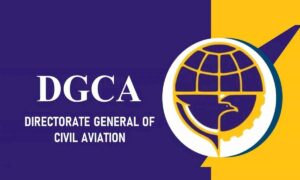GS II – Governance
What is DGCA?
The Directorate General of Civil Aviation (DGCA) is India’s civil aviation regulator.
-
Established: 1927 (as a government directorate), restructured over time.
-
Headquarters: New Delhi
-
Parent Ministry: Ministry of Civil Aviation
-
It is an executive body functioning under the Aircraft Act, 1934 and Aircraft Rules, 1937.
-
However, there are ongoing reforms (e.g., the Bharatiya Vayuyan Vidheyak Bill, 2024) aimed at giving it broader quasi-statutory powers.
Functions & Powers of DGCA
| Category | Powers/Functions |
|---|---|
| Regulatory | Lays down standards for airworthiness, licensing, aircraft operations. |
| Licensing | Issues licenses to pilots, AMEs (Aircraft Maintenance Engineers), ATC personnel. |
| Safety Oversight | Investigates safety violations, monitors airline operations and airworthiness. |
| Environmental | Regulates aircraft emissions and noise standards. |
| International | Coordinates with ICAO and other global aviation bodies. |
| Air Navigation | Approves air routes, coordinates air traffic regulations with AAI. |
Recent Reforms: Empowering DGCA
Bharatiya Vayuyan Vidheyak, 2024 (Indian Civil Aviation Bill)
-
Aims to modernize and codify aviation regulations.
-
Proposes greater autonomy to DGCA in:
-
Aircraft certification
-
Licensing
-
Regulation of UAVs and eVTOLs
-
-
Seeks to reduce overlap with Department of Telecommunications (DoT) in radio certification.
Recent News:
DGCA vs Air India – Safety & Duty-Time Violations
-
In May 2025, Air India violated Flight Duty Time Limitations (FDTL) for long-haul flights.
-
DGCA action:
-
Show-cause notice to CEO of Air India.
-
Removal of 3 senior crew scheduling officials.
-
Audit into compliance with rest periods and pilot fatigue protocols.
-





